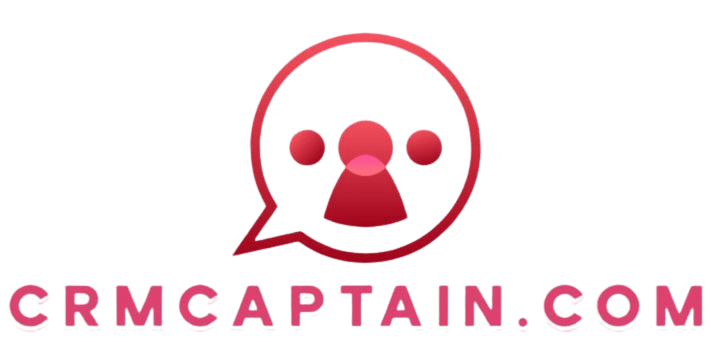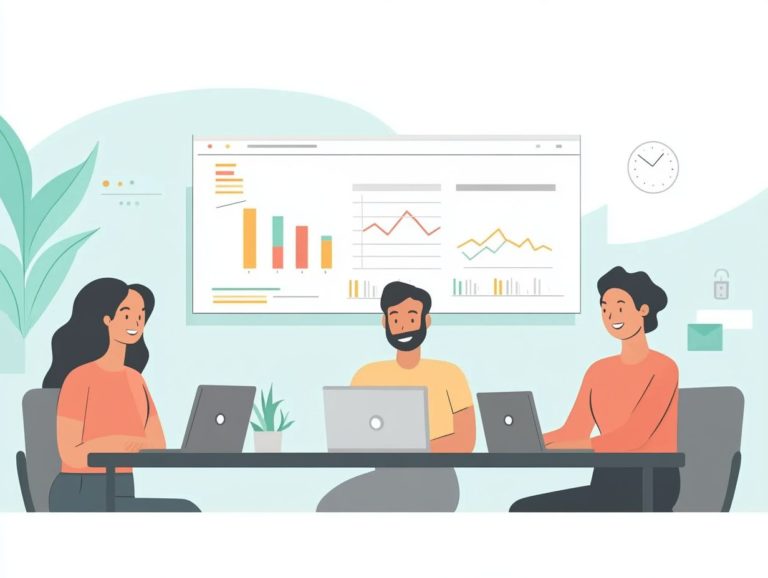76. 7 Strategies for Effective CRM in Nonprofits
In the ever-evolving landscape of non-profit organizations, effective donor management is essential for achieving mission-driven goals. This article explores the vital role that a Customer Relationship Management (CRM) system plays in enhancing donor engagement and retention.
By understanding your donor base, personalizing interactions, and integrating technology, you can start using powerful strategies today that will transform your non-profit’s operations.
We will explore the key features to seek in a CRM system and outline best practices for overcoming common challenges.
Join us to elevate your non-profit’s impact through the strategic use of CRM!
Contents
- Key Takeaways:
- 1. Understanding the Importance of CRM in Non-Profits
- 2. Identifying and Segmenting Your Donor Base
- 3. Building Strong Relationships with Donors
- 4. Personalizing Communications and Interactions
- 5. Utilizing Data to Improve Engagement and Retention
- 6. Integrating CRM with Other Nonprofit Software
- 7. Measuring and Evaluating CRM Success
- What Are the Key Features of a CRM System for Nonprofits?
- Frequently Asked Questions
- What is CRM and why is it important for nonprofits?
- What are the 7 strategies for effective CRM in nonprofits?
- How can nonprofits effectively identify and segment their target audiences?
- Why is building and maintaining a database important for effective CRM in nonprofits?
- How can nonprofits use data analytics to improve their CRM strategies?
- What are some tips for providing excellent customer service in a nonprofit setting?
Key Takeaways:

- Effective CRM is crucial for non-profit organizations to maintain and grow their donor base.
- Segment donors and build strong relationships through personalized communication.
- Utilize data and integrate with other non-profit software to improve engagement and measure success.
1. Understanding the Importance of CRM in Non-Profits
The significance of a robust CRM strategy in non-profit organizations cannot be overstated. It serves as a cornerstone for managing relationships and enhancing organizational effectiveness through optimized engagement, personalized interactions, and key features every nonprofit CRM should have that enable data-driven decision-making.
By leveraging CRM systems, your organization can streamline data management, significantly enhancing donor relations and overall satisfaction. These platforms allow you to gather insights into donor behaviors and preferences, informing tailored engagement strategies.
With the ability to segment your audience, you can personalize communications, ensuring that each interaction resonates with individual supporters.
This enriched donor journey builds trust and drives greater donor retention and support. Ultimately, advanced market research capabilities allow you to align your initiatives with the needs and interests of your community.
2. Identifying and Segmenting Your Donor Base
Identifying and segmenting your donor base is essential for non-profits. This enables you to implement targeted marketing campaigns that resonate with specific audience personas, enhancing engagement.
By employing market research techniques such as surveys and data analysis, your organization can uncover valuable insights into donor behaviors and preferences. This understanding lets you tailor communications to address the motivations and interests of various segments whether major donors, recurring supporters, or one-time contributors.
By crafting personalized messages and utilizing the channels each segment frequents, you can foster deeper connections, ultimately driving higher levels of support and loyalty.
3. Building Strong Relationships with Donors
Building strong relationships with donors requires fostering a culture of engagement that emphasizes personalized interactions, continuous communication, and showcasing the impact of their contributions. This is how you create loyalty and satisfaction.
Show your donors how much they mean to you with thoughtful gestures! Tailor communications to resonate with each donor’s unique interests, ensuring they feel valued and understood.
Implement robust feedback mechanisms to allow your donors to share their thoughts and suggestions, nurturing a sense of community and involvement.
Express gratitude through initiatives such as personalized thank-you notes or recognition events. These efforts not only strengthen your current relationships but also cultivate long-term loyalty.
Donors will appreciate the genuine recognition and the shared mission, ultimately encouraging their ongoing support for your future endeavors.
4. Personalizing Communications and Interactions
Personalizing your communications is crucial for enhancing customer experience in your nonprofit. Tailoring your messaging ensures it meets the unique needs of each donor.
Use advanced CRM systems and tools to segment your audience for precise outreach. Analyzing user behavior helps craft messages that truly resonate.
This approach boosts engagement and drives donations. Donors feel valued and heard, which strengthens relationships.
Using data-driven insights allows you to anticipate donor needs and respond proactively. This enhances the effectiveness of your communications.
Ultimately, a personalized strategy helps build lasting connections with your supporters.
5. Utilizing Data to Improve Engagement and Retention

Utilizing customer data effectively can significantly enhance your engagement and retention rates as a nonprofit organization. This allows you to analyze performance and refine your strategies based on genuine insights.
By diving into analytics, you can track essential engagement metrics like donation frequency, volunteer participation, and event attendance. This deeper understanding enables you to tailor your outreach efforts and create targeted campaigns that truly resonate with your audience.
For example, you might discover that younger donors are more inclined to engage through social media, prompting a strategic pivot to incorporate more digital events. Collecting customer feedback through surveys reveals areas needing improvement and guides you to enhance your services.
Ultimately, this focus will lead to improved retention strategies and foster long-term loyalty.
6. Integrating CRM with Other Nonprofit Software
Integrating a CRM system with other nonprofit software is essential for streamlining your business processes, enhancing task automation, and ensuring that all departments work together toward shared goals.
This integration creates a seamless flow of information, significantly reducing the need for manual data entry and minimizing the potential for errors.
With improved data synchronization, your teams gain access to real-time insights, allowing them to make informed decisions quickly and confidently.
As you evaluate suitable software, consider factors such as user-friendliness, scalability, and compatibility with your existing tools these criteria are crucial.
Ultimately, a well-integrated CRM not only boosts your efficiency but also enhances collaboration among various departments, enabling them to achieve their objectives more effectively.
7. Measuring and Evaluating CRM Success
Measuring and evaluating CRM success is crucial for nonprofits like yours to grasp the true impact of your strategies. By employing performance analysis and clearly defined metrics, you can assess both business outcomes and identify areas for improvement.
Focusing on Key Performance Indicators (KPIs) such as donor retention rates, engagement levels, and conversion rates allows your organization to uncover valuable insights into your outreach efforts. Tracking these metrics enables you to spot trends, evaluate the effectiveness of your campaigns, and make informed adjustments that enhance donor relations and fundraising initiatives.
Regular evaluations not only help you recognize successful tactics but also illuminate areas that may need strategic changes. This ongoing assessment keeps your organization agile and responsive to the needs of the community, ultimately fostering stronger connections and promoting sustainable growth.
What Are the Key Features of a CRM System for Nonprofits?
A CRM system for nonprofits should include essential features that automate tasks, enhance customer support, and streamline donor management. This allows you to tackle the unique challenges your organization faces effectively.
By grouping your supporters based on their interests and backgrounds, you can personalize outreach efforts. This targeted approach fosters deeper connections and boosts your chances of securing donations.
Sales forecasting tools help you anticipate funding trends, allowing for more strategic resource allocation. Marketing automation helps streamline your communication efforts, ensuring that updates and calls to action reach your audience promptly.
Together, these features are critical for helping nonprofits thrive in their missions while managing relationships and initiatives efficiently.
How Can a Nonprofit Choose the Right CRM System?
Choosing the right CRM system is pivotal to your nonprofit’s business strategy. You must quickly understand what sets different systems apart and how these unique selling points align with your organizational goals.
To manage donor relationships and streamline operations effectively, consider the following factors:
- Choose a scalable system that grows with you.
- Select customization options that match your workflows.
Understanding the pricing structure is essential due to budget constraints in the nonprofit sector.
By aligning the software s features with your organization s needs, you maximize resources and cultivate stronger connections with supporters and stakeholders.
What Are the Common Challenges in Implementing CRM in Nonprofits?

Implementing a CRM system in your nonprofit can come with challenges. You might face resistance to change, limited resources, and the need for effective employee training to create a seamless user experience.
Data migration can be tricky. Transferring existing information to the new system without proper management can lead to data loss or inconsistencies. Fostering user adoption may also present a hurdle, especially when team members are accustomed to outdated processes.
Addressing these challenges requires a thoughtful investment in comprehensive training that highlights the CRM system s benefits. Establishing a clear change management plan is also essential. Actively engaging your staff in the transition process promotes greater acceptance and support, ensuring the successful utilization of your CRM tools.
How Can a Nonprofit Overcome Resistance to CRM Adoption?
Embrace effective strategies to overcome resistance to CRM adoption in your nonprofit! Focus on collaboration, transparent communication, and comprehensive employee training to showcase the value of the new system.
Involve your staff in the decision-making process and welcome their input to foster a sense of ownership regarding the new platform.
Highlight success stories where the CRM has improved efficiencies or enhanced donor relationships to serve as motivation and reinforce the system’s benefits.
Provide ongoing support through regular check-ins and easily accessible training resources to ensure your employees feel supported during the transition.
Remember, leadership plays a pivotal role in this transformation. By modeling enthusiasm and engagement with the CRM, you can inspire your team to embrace these changes with confidence and optimism.
Ready to transform your nonprofit’s operations? Start your CRM journey today!
What Are Some Best Practices for Using CRM in Nonprofits?
Using best practices for CRM in nonprofits is essential. It helps maximize customer insights, optimize workflows, and improve operational efficiency.
Regularly cleansing your data keeps records accurate and up-to-date. These records are vital for effective decision-making.
Gathering feedback from stakeholders tailors your services and showcases your commitment to continuous improvement.
Standardizing processes streamlines operations, making it easier for your team to collaborate and share information.
By adopting these practices, you ensure your nonprofit can adapt and respond to changing needs, ultimately building stronger relationships and increasing your impact in the community.
How Can a Nonprofit Continuously Improve Their CRM Strategy?
Continuously enhancing your nonprofit’s CRM strategy requires actively seeking customer feedback and staying attuned to market trends. This allows you to adapt and refine your engagement practices.
Incorporating iterative evaluation processes ensures your approaches resonate with your audience and meet their needs effectively.
Conducting surveys or focus groups yields valuable insights into donor preferences and volunteering motivations. This enables you to tailor your messaging accordingly.
Monitoring social media engagement provides real-time reactions to your campaigns, allowing you to adapt swiftly.
Market research unveils emerging trends in philanthropy, enabling you to pivot your strategies for better alignment with donor expectations. This drives growth and boosts your community impact.
Check out this video for more insights!
Frequently Asked Questions
What is CRM and why is it important for nonprofits?

CRM stands for Customer Relationship Management. It refers to the strategies and tools used by organizations to manage and analyze interactions with customers.
Nonprofits use CRM to build and maintain strong relationships with donors, volunteers, and other stakeholders, as well as to track and measure their impact.
What are the 7 strategies for effective CRM in nonprofits?
The 7 strategies are: 1) Identify and segment your target audiences, 2) Build and maintain a database, 3) Develop a communication plan, 4) Utilize data analytics, 5) Provide excellent customer service, 6) Personalize interactions, and 7) continuously improve and adapt.
How can nonprofits effectively identify and segment their target audiences?
To identify and segment target audiences, nonprofits should conduct market research, analyze data from past interactions, and use tools like surveys and focus groups.
Consider factors such as demographics, interests, and behaviors to create specific audience segments.
Why is building and maintaining a database important for effective CRM in nonprofits?
A database allows nonprofits to collect and store information about their contacts and interactions.
This data can then be used to personalize communications, track engagement, and measure the effectiveness of campaigns. A well-maintained database ensures that information is accurate and up-to-date.
How can nonprofits use data analytics to improve their CRM strategies?
Data analytics helps nonprofits better understand their target audiences, identify trends and patterns, and make data-driven decisions.
By analyzing data from various sources, nonprofits can gain valuable insights into their supporters’ behaviors and preferences, allowing them to tailor their CRM strategies for maximum impact.
What are some tips for providing excellent customer service in a nonprofit setting?
Some tips for providing excellent customer service include:
1) Being responsive and timely in your communications,
2) Being empathetic and understanding of your supporters’ needs and concerns,
3) Offering multiple channels for communication,
4) Providing opportunities for feedback and addressing any issues promptly, and
5) Going above and beyond to show appreciation for your supporters.
Ready to enhance your nonprofit s CRM strategy? Let s get started!






